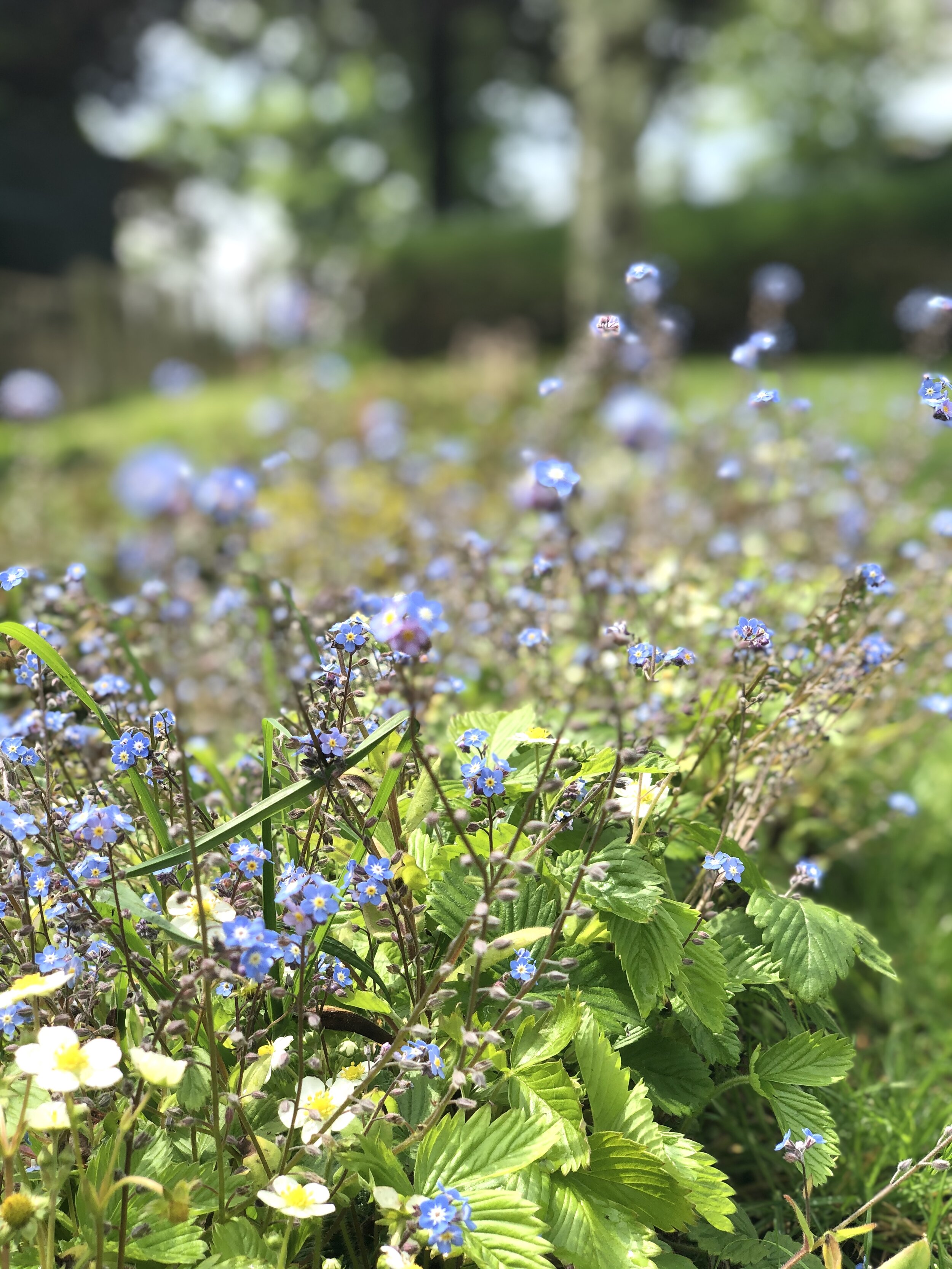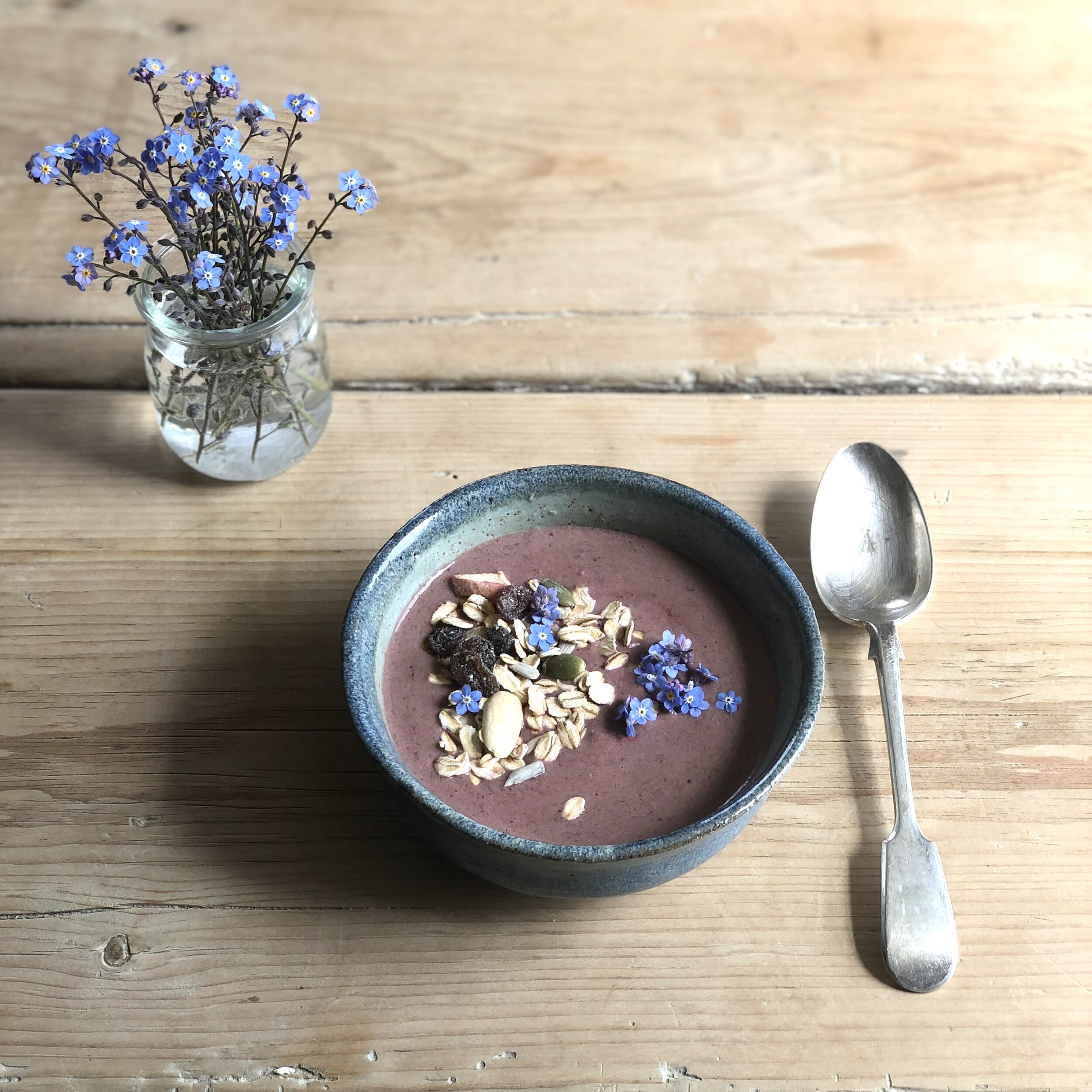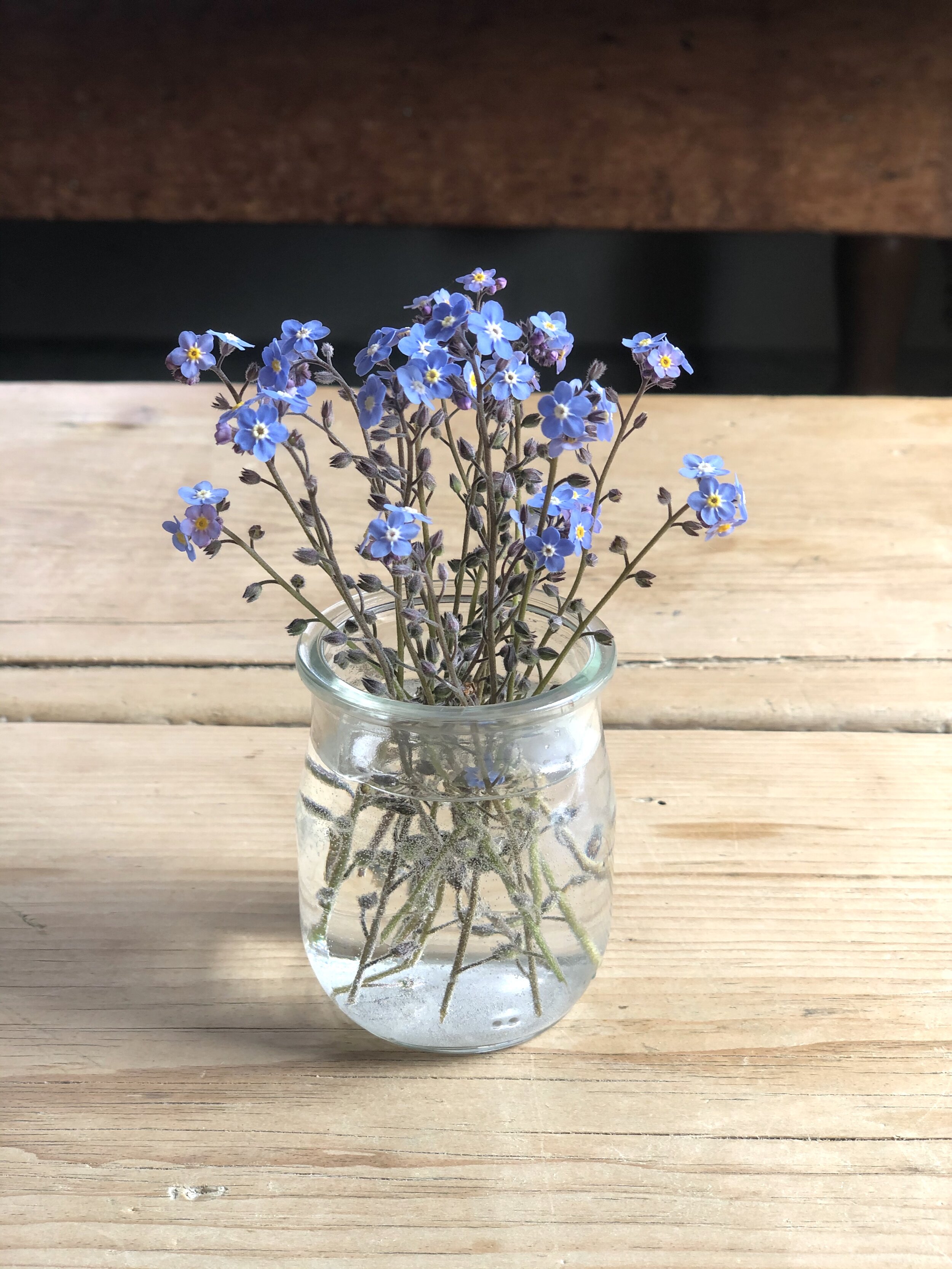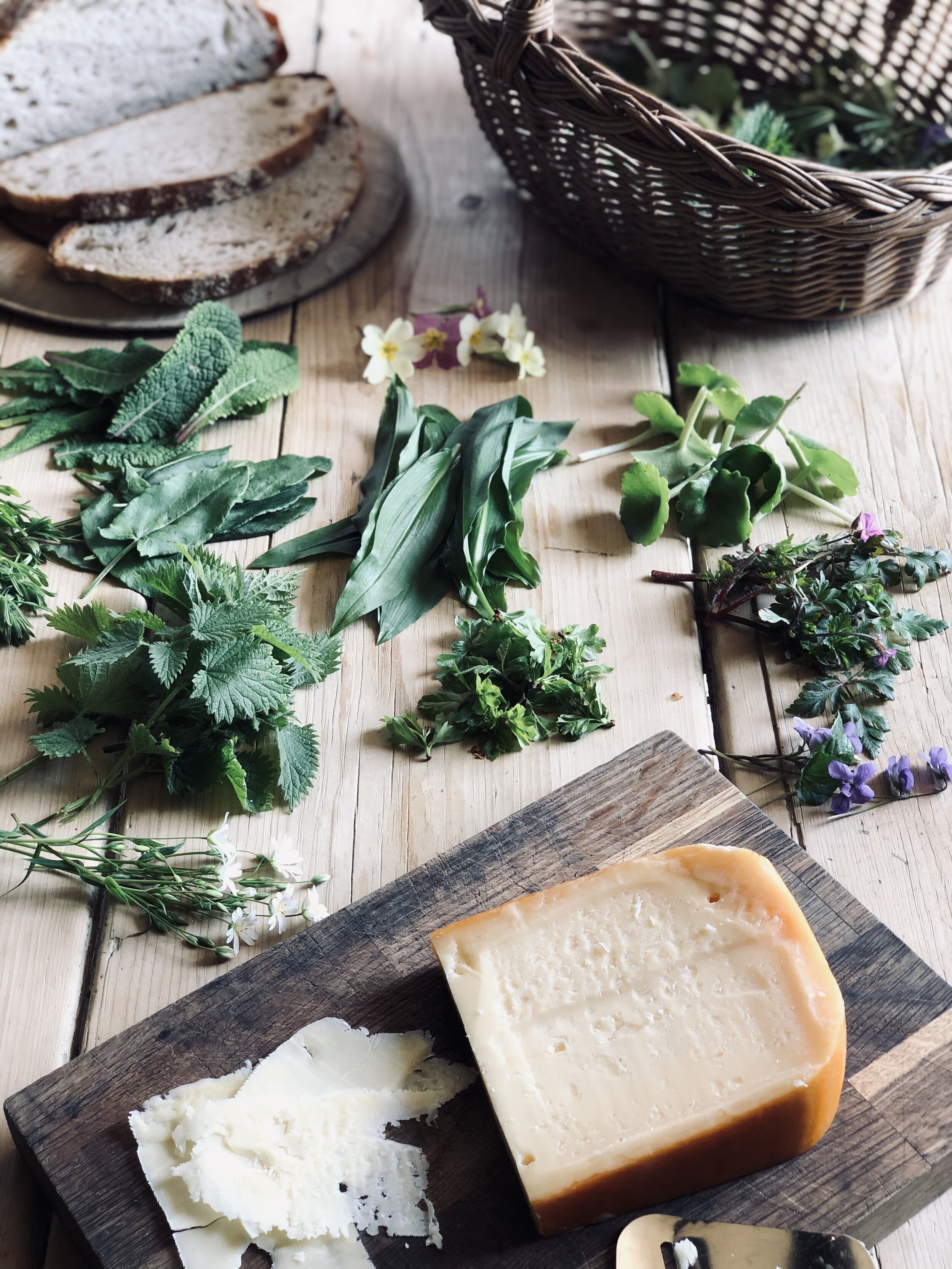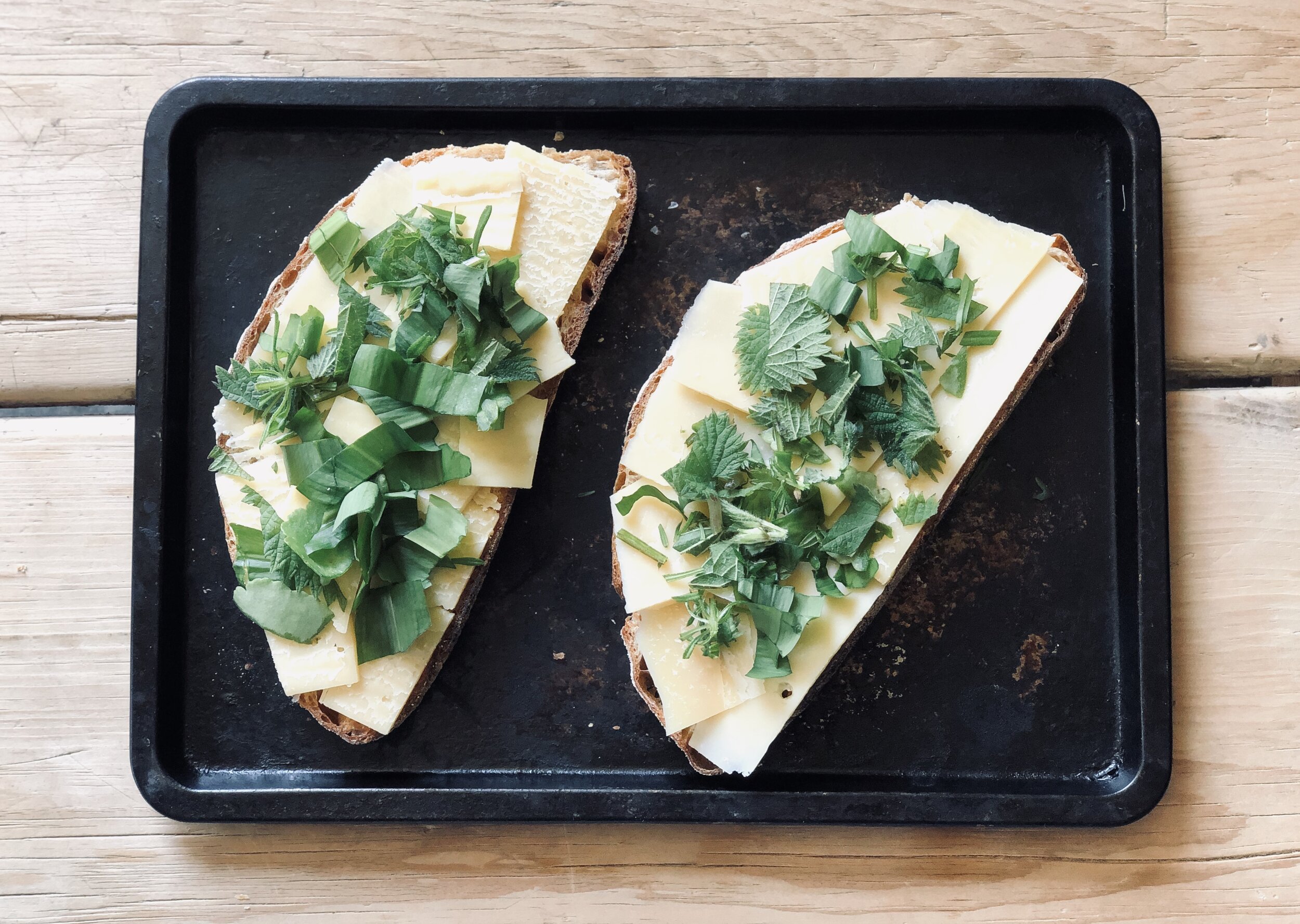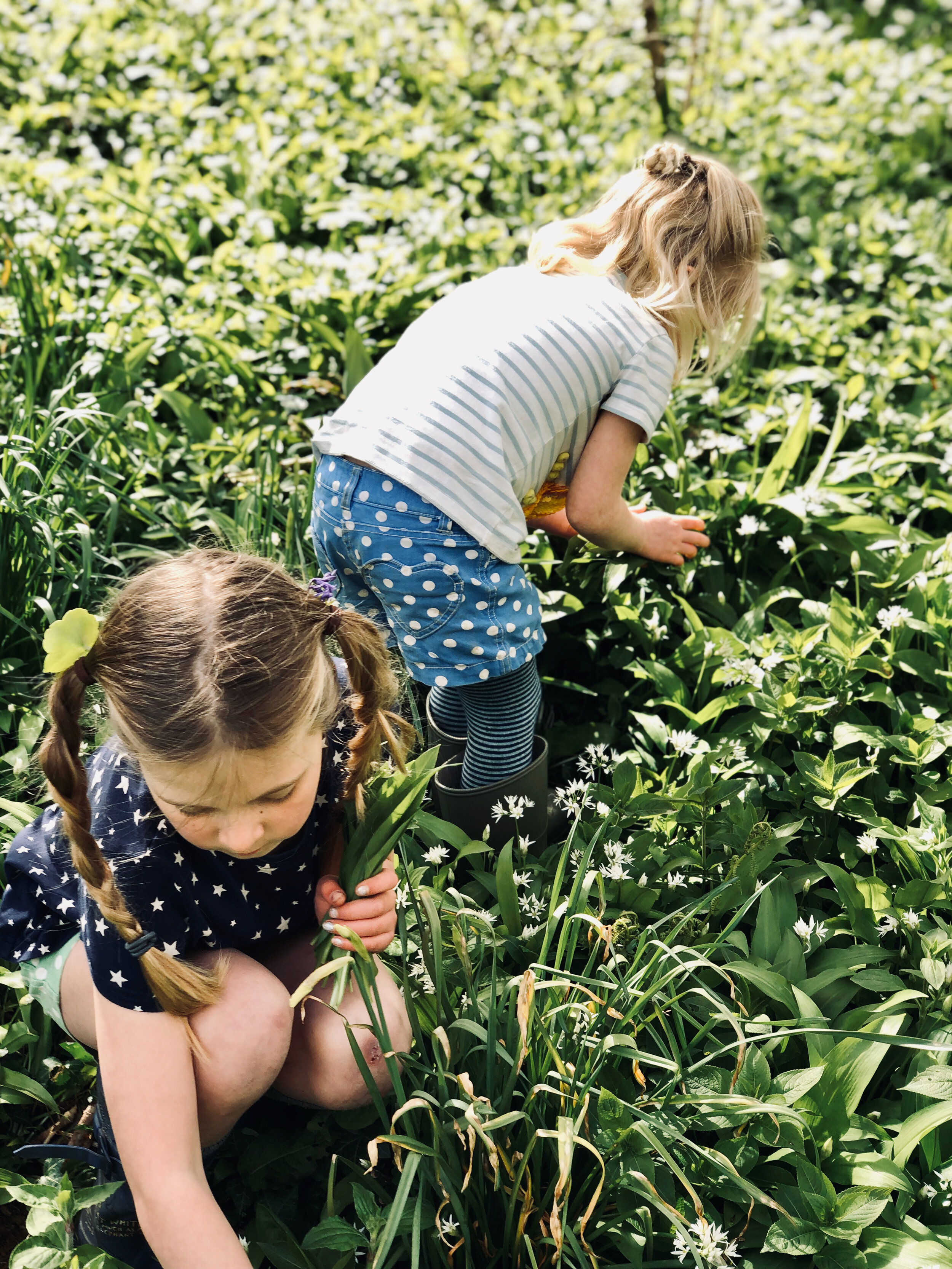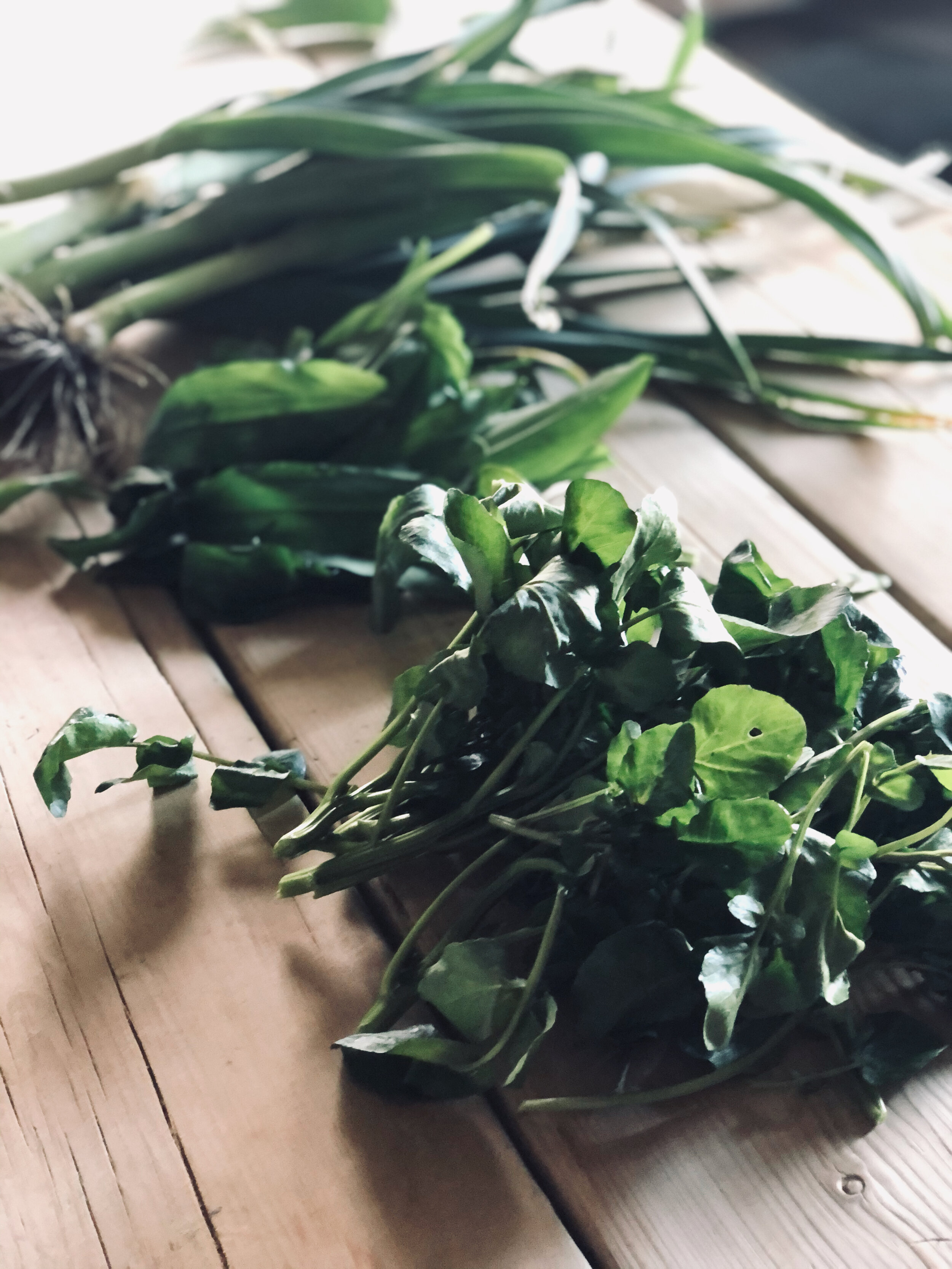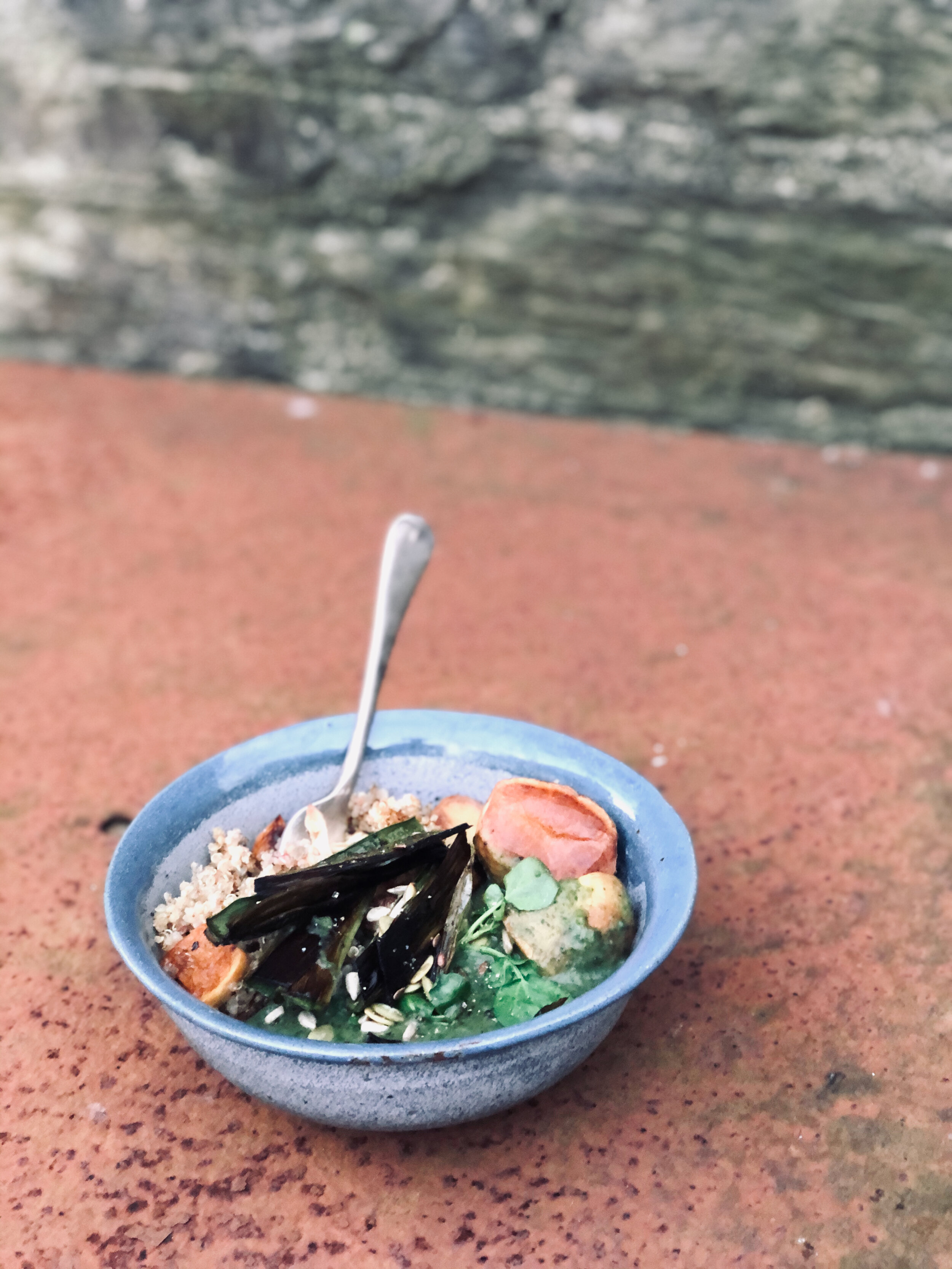This recipe is so easy to make and hugely versatile according to what you have available. I stepped out for a foraging walk along the lanes with the kids to see what we could find. I have found it such a joy during this phase of lockdown living to be able to walk through fields and woodlands taking time to identify and then utilise more of the wild bounty that surrounds us; something I’ve always had great intention to do yet never quite made enough time for. I do realise how very lucky we are to have deserted lanes to walk in, being located here on the farm and for that we are all truly grateful.
We are also hugely grateful to our wonderful local suppliers who are still safely delivering their produce, for this recipe I used Baker Tom sourdough (they are doing a weekly delivery to our local community centre car park), and Cornish Gouda from along the lanes.
The beauty of this recipe is simplicity and adaptability - have fun of foraging for whatever you can find (if you have access to a garden or the countryside on your doorstep) but of course you can also use bought vegetables and salad items to create your recipe.
I personally love the flavours of gently wilted primrose leaves as the base of a side salad, then sorrel, wild garlic and young hawthorn leaves are delicious raw, topped with toasted seeds, a simple dressing, mint leaves if you have any in your garden, and edible flowers. For the foraged plants to cook on top of the cheese, I love the nutty taste of nettle along with wild garlic, sticky willy, dandelion leaves and penny wort. Wild Food UK has a great online guide (and handy guidebook) if you’d like some help with identification. Please also see notes on foraging guidelines below.
Whether you’re able to get out for a foraging walk or simply make this at home using up some salad and veggie leftovers, I hope you have fun creating and eating this recipe
Tia x
“Croque Fourrage”
Serves 2
Ingredients
2 large slices bread - I used sourdough
150g / few handfuls of sliced cheese, enough to cover well each slice of bread. I used mature Cornish Gouda.
Few handfuls foraged leaves - some to be cooked on toast, some to make a fresh salad. This is adaptable depending on what you have available and your preferences, I used:
For on top of the toasted cheese: nettle, wild garlic, dandelion leaves, penny wort.
For the salad: primrose leaves, young hawthorn leaves, wild garlic and sorrel (see foraging guidelines below)
If you you aren’t able to forage then bought or garden leaves such as spinach and chard would work well on top of the cheese and use leaves you have available for the salad.
Handful foraged edible flowers, for example primrose, sweet violet, herb robert or stitchwort (optional, see foraging guidelines below)
Drizzle rapeseed oil (or an alternative oil)
Drizzle gorse syrup or honey (optional) - for gorse syrup recipe see below
Drizzle tamari or soy sauce (tamari is a gluten free version)
Handful of seeds eg sunflower, pumpkin, poppy, linseed, sesame - any combination
Glug of olive oil
Glug of balsamic vinegar
Salt & pepper
Method
If you have access to foraged plants, head out for a walk and see what you can find. See recommendations above for the type of edible plants that you might find in season right now (April) and bear in mind responsible foraging guidelines below.
Back home, choose which plants you will use to go on top of the cheese, and which you will use for a side salad. I have given suggestions above but these are adaptable according to availability and preference.
Prepare the bread: cut a couple of slices for each person, lightly toast them and set aside.
Slice the cheese so there is enough to cover well each slice of bread. Place the bread on a baking tray and top with the cheese.
Chop the leaves that you will use to top the cheese and scatter these over. Drizzle tamari on top.
Prepare the seeds: toast lightly in a saucepan until starting to brown and pop. Remove from heat and set aside.
Cook the cheesy toast: we don’t have a grill so I use an oven preheated to 180C for approx 8 mins until cheese is bubbling but not over-cooked and foraged plants are wilted. Alternatively, place in the grill for approx 5 mins.
While the toasted cheese is cooking, in a saucepan add a drizzle of rapeseed oil and either gorse syrup or honey, add the primrose leaves and cook for one or two minutes until they just start to wilt. Take off the heat.
Make the dressing - combine a glug of olive oil and balsamic vinegar in a jar or jug, add a drizzle of gorse syrup or honey (optional) and some salt and pepper, mix together.
Place the toasted cheese on two plates, make the side salad by adding a small pile of wilted primrose leaves on each plate, then adding the fresh salad leaves, toasted seeds, a drizzle of dressing then the edible flowers on top.
To make gorse syrup
I made this a couple of weeks ago with the kids, we used 1 litre water and 400g granulated sugar, combined them in a saucepan and simmered for 10 minutes then removed from heat and added 5 large handfuls of gorse flowers. We left it overnight then simmered for another 10 minutes in the morning before straining through muslin, bottling and popping in the fridge. This makes lots of syrup - enough for a good few cakes, drinks, salad dressings and anything else you care to make with it - and we’d love to know if you have any good ideas!
Foraging guidelines
Do remember to follow responsible foraging guidelines, ensuring you only take plants when there is a plentiful supply, just picking what you need, and never taking the roots. Seek permission before foraging on private land. Here at Botelet Farm there the hedgerows right now are teeming with primroses, sweet violet and stitchwort, however be aware that in some areas these plants can be scarce and are therefore not suitable for picking. It’s a good idea to check foraging guidelines before setting out, see for example Wild Food UK’s Foraging Code.

